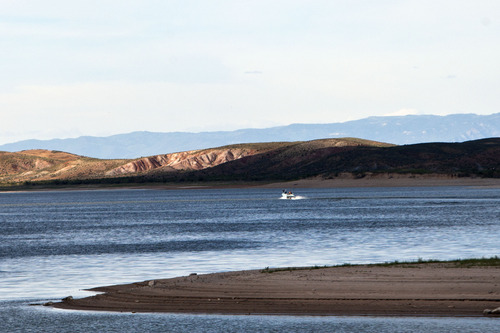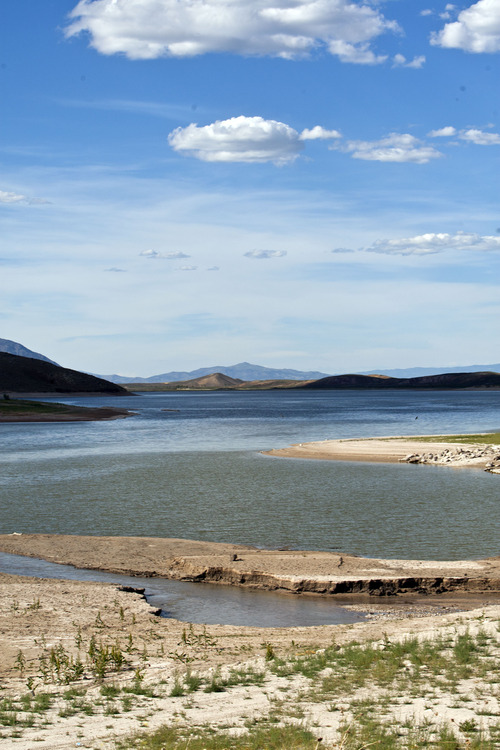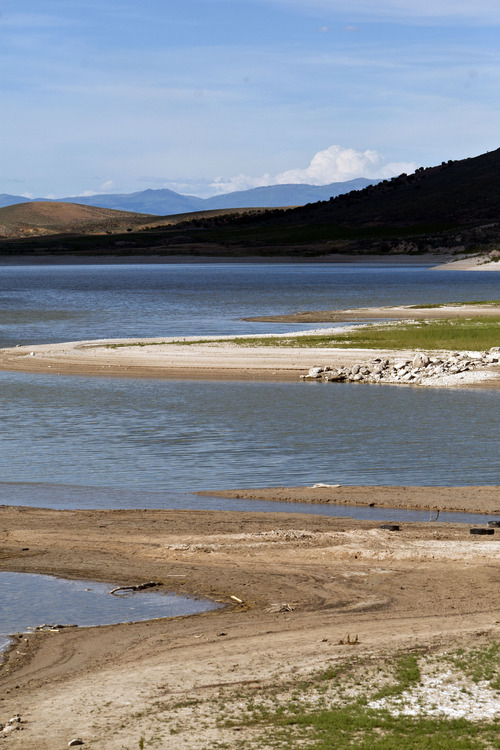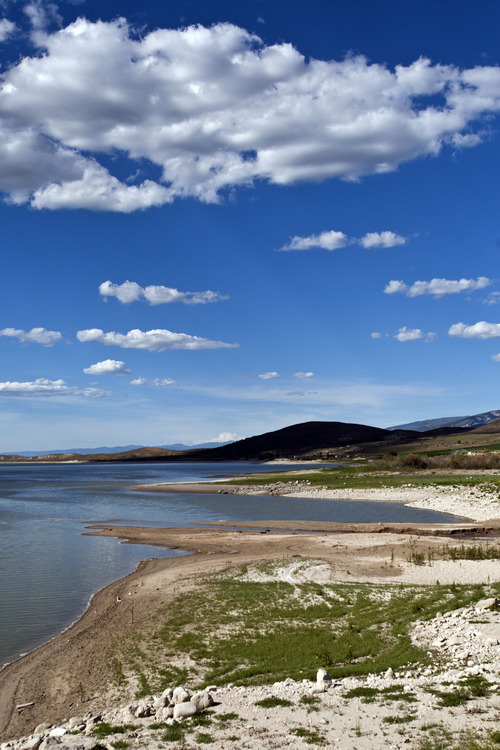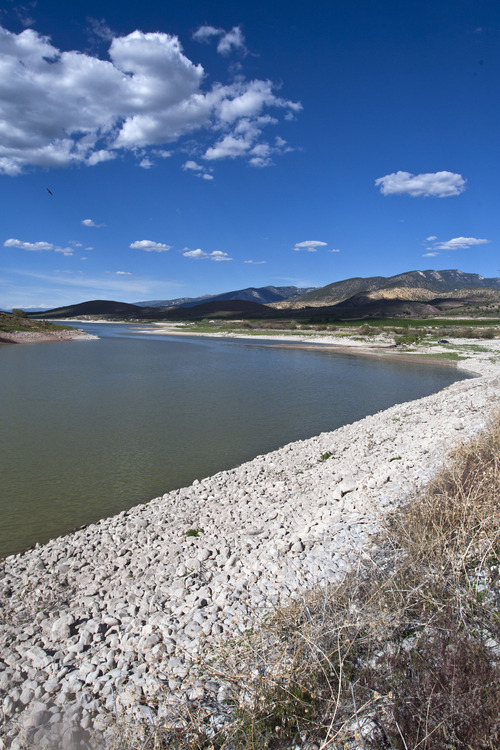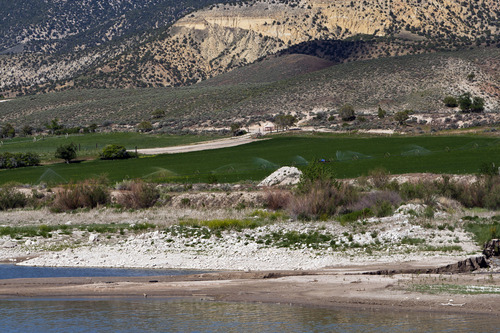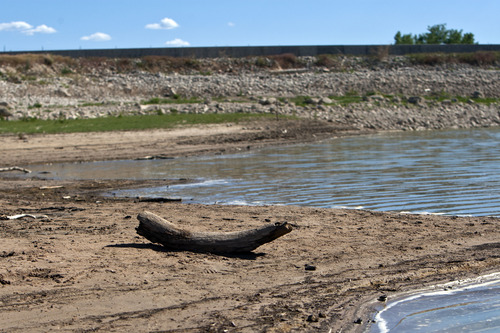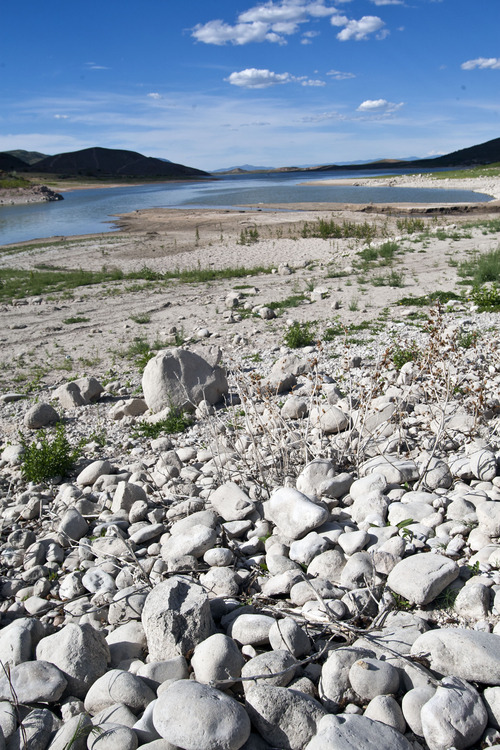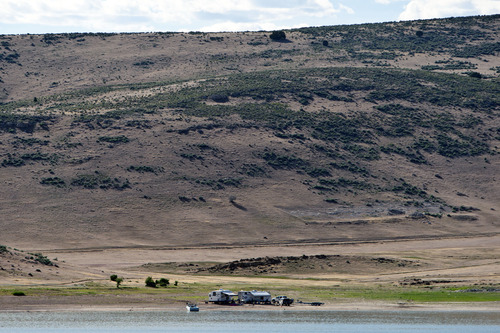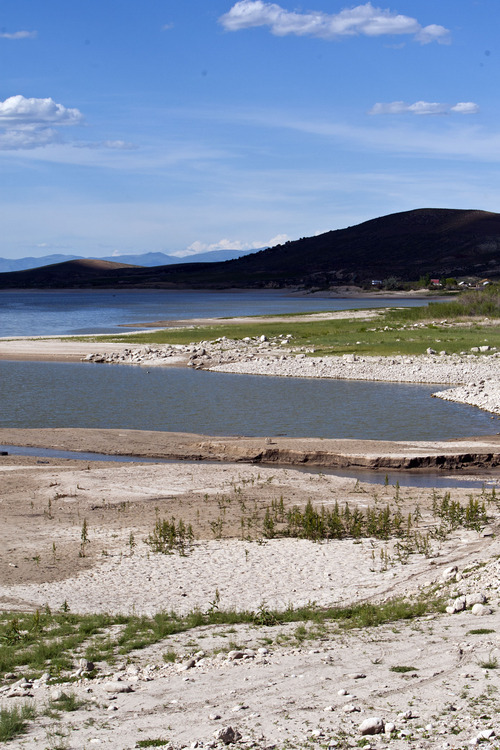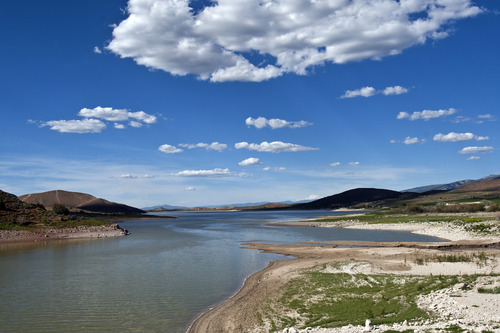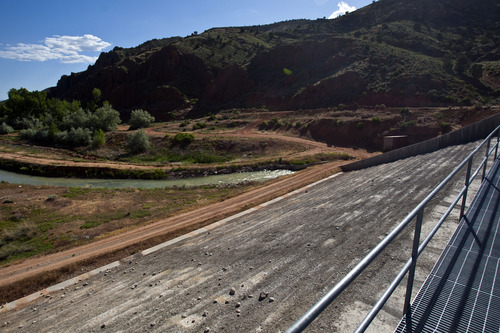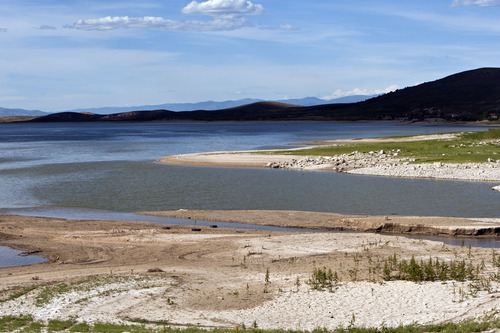This is an archived article that was published on sltrib.com in 2013, and information in the article may be outdated. It is provided only for personal research purposes and may not be reprinted.
Agriculture production around the state is expected to take a hit this summer as the water supply outlook grows increasingly bleak. At a time of year when the irrigation season should only be beginning, it is coming to a premature end in some places, such as the San Pitch Valley where its river and the Gunnison Reservoir have gone dry.
"In another month we'll be done here. We'll probably get a first cutting [of alfalfa] and a decent second, but I doubt there will be much of a third," said Ephraim farmer Michael Larson, who chairs the Sanpete Conservation District.
Stream flows, fed by below-normal snowpacks, peaked early this spring, leaving little to recharge the state's water-storage system, already under pressure from last year's dry winter, according to Randy Julander, a hydrologist with the Natural Resources Conservation Service.
"Streams are running at 50 percent of where we were running 10 days ago. We have only a few sites that have any snow left," said Julander, who leads NRCS's snow survey program. "There is nothing to sustain stream flows. It looks like it's going to be a long summer."
His agency's June update reports that reservoir storage is now 15 percent below where it was at this time last year. On average Utah reservoirs are at 65 percent capacity.
"Most rivers are in recession and flows will be at summer base flows quickly," states the report released Thursday. "Snow packs have melted out over the entire state at this point. Much of this year's snowmelt has gone to recharge soil moisture which is currently average in the north and dry in the south."
Southern parts of the state are particularly hard hit, with several reservoirs falling well below half their capacity at a time of year when levels should be rising. Northern stream flows and reservoirs are also in trouble. The Weber Basin Water Conservancy District decided last week to cut wholesale irrigation deliveries by 20 percent.
Elsewhere, water availability appears to fall within the norm. The Bear, Sevier and western Uinta basins are in good shape, according to the report.
Outside Moab, however, Ken's Lake has shrivelled to just 590 acre feet. That's about 30 percent of what is normal this time of year for this reservoir, which stores water from Mill Creek coming out of the La Sals, according to Mark Sovine, general manager of the Grand County Water Conservancy District.
"We have 155 irrigation customers who rely on that water. We have restricted them to 40 percent. We are using groundwater to supplement that to get that to the 40 percent," Sovine said. "As the lake runs dry, more people put wells into the ground and that could have an adverse effect on our aquifer."
Also disappearing is Washington County's upper Enterprise Reservoir, now holding only 17 percent of its 12,000-acre-foot capacity.
"We pretty well cut our deliveries in half. That's for the season," said Jim Simkins, president of the Enterprise Reservoir and Canal Co.
He has seen his reservoirs in worse shape in past years. Still, he figures some Enterprise irrigators will forgo a planting this season if they don't have access to supplemental water and the weather doesn't cooperate.
"A lot have well water, but guys like me don't, so it remains to be seen how we can stretch our water and if we have rain," said Simkins, who grows hay on 14 acres.
With this season's water shortage, farmers and ranchers will have to gamble on how to implement their irrigation cutbacks, Julander said. Should they spread the cuts over the summer or take it all at the end? Making the wrong call can result in a big loss.
"It is certainly a hardship on the agricultural community," Julander said. "In the case of growing things, you can only do less with less, and it's not a linear curve. It might be a dramatic reduction in production."


